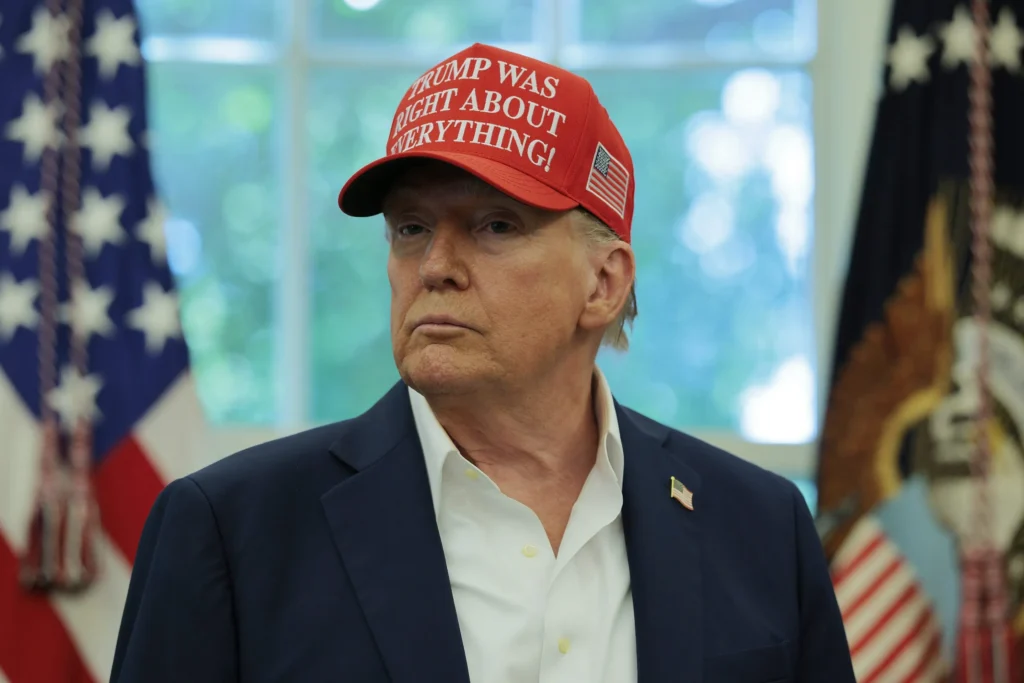President Donald Trump’s escalating attacks on the Federal Reserve have rattled Wall Street once again, with investors weighing the costs of what some economists call “scapegoat economics” against the long-term resilience of the U.S. central bank. His latest threat to fire another sitting governor, following his repeated criticism of Fed Governor Lisa Cook, has intensified debate over how far politics can intrude into an institution built to be independent of partisan pressures.
An Unprecedented Challenge to Fed Independence
UBS chief economist Paul Donovan told clients that Trump’s remarks amounted to an extraordinary break with U.S. precedent. “The attempt is completely unprecedented,” Donovan noted, highlighting that the Federal Reserve’s governors, once confirmed by the Senate, cannot be dismissed at will by the president. The credibility of the Fed, he argued, depends on precisely that insulation from short-term political demands.
By threatening to upend that principle, Trump has injected volatility into bond and currency markets, where traders now weigh the risk premium attached to potential institutional instability. Some analysts warn that if investors begin to doubt the Fed’s ability to chart its own course, borrowing costs could rise even before policy changes are made.
Noise Versus Substance
Not all economists believe the threat will carry lasting weight. Jeremy Siegel, finance professor at the Wharton School, argued that while the rhetoric adds “noise,” the substance of monetary policy will remain tied to broader macroeconomic shifts, not to political jousting. “Markets are far more focused on inflation data, productivity trends, and fiscal policy than on whether one individual governor remains in place,” Siegel said.
Still, Siegel conceded that the uncertainty around leadership at the Fed could erode confidence in its decision-making process, even if the fundamentals of policy stay unchanged.
Markets React With Caution
The initial reaction across Wall Street was one of caution rather than panic. Treasury yields edged higher on concerns that political attacks could erode the Fed’s credibility at a time when inflation remains above the 2% target. Equities, meanwhile, showed resilience, as many investors bet that the central bank’s institutional framework—and its chairman—would withstand political pressure.
Currency traders were less sanguine. The dollar weakened against a basket of major peers, as some analysts suggested investors might be building in a “political discount” to reflect risks that the Fed could become a political battleground in an election year.
The Broader Economic Stakes
The episode underscores the fragile balance between politics and central banking. Independent central banks are considered a cornerstone of modern economic stability, designed to prevent short-term electoral considerations from dictating long-term monetary policy. If that independence comes into question, the U.S. could face:
- Higher borrowing costs, as investors demand compensation for greater policy risk.
- Currency volatility, undermining the dollar’s role as the world’s reserve currency.
- Investor flight to safety, with more capital moving into gold, Treasuries, and foreign bonds.
At the same time, some political strategists argue that Trump’s messaging is less about monetary policy and more about appealing to voters frustrated by high interest rates and borrowing costs. By casting the Fed as a scapegoat, he may seek to deflect blame for economic pain while bolstering his populist credentials.
Institutional Resilience on Trial
For now, Trump’s threats may not translate into immediate institutional change, but they mark a historic test of the Fed’s independence. The central bank has weathered political storms before—from Richard Nixon’s pressure on Arthur Burns in the 1970s to Donald Trump’s earlier clashes with Jerome Powell—but rarely with this level of public intensity.
Whether markets ultimately price in a serious risk of institutional erosion depends on how far the confrontation escalates. Investors, for now, are left weighing two possibilities: that Trump’s threats are political theater with little policy impact—or that they represent a shift toward a more volatile relationship between Washington and the central bank.
Looking Ahead
As inflation trends lower but remains above target, and as growth shows signs of slowing, the Fed already faces a delicate balancing act. Layering political instability on top of economic uncertainty could amplify risks.
“The real danger,” Donovan warned, “isn’t in one governor being fired—it’s in the idea that rules can be bent and institutions undermined. Once that becomes part of the political and market psyche, the costs are very real.”
For investors, then, Trump’s latest threat is less about one official’s fate and more about the broader price of questioning the independence of the world’s most influential central bank.



